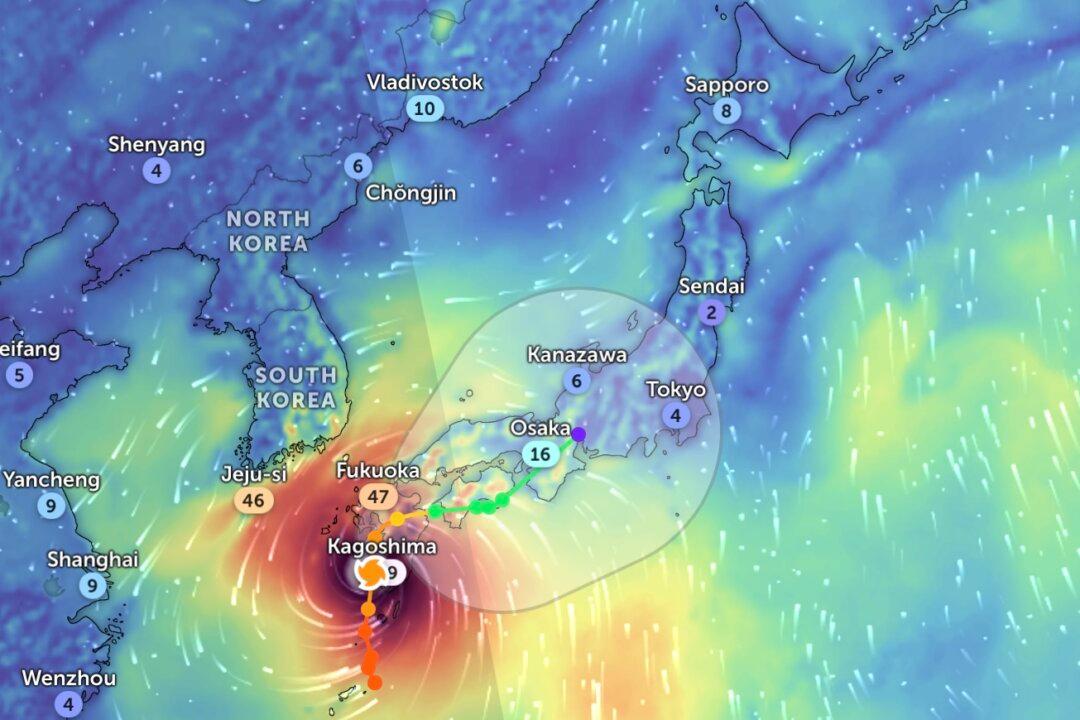Typhoon Shanshan made landfall in southern Japan on Thursday, local time, causing at least three deaths and raising concerns of flooding, landslides, and severe damage.
Nearly 1 million people were evacuated, and 4 million were urged to leave before the storm made landfall on the island of Kyushu, just south of Nagasaki. The typhoon brought nearly 2 feet of rainfall—more than the August average—in parts of Miyazaki Prefecture, according to the country’s weather service.





